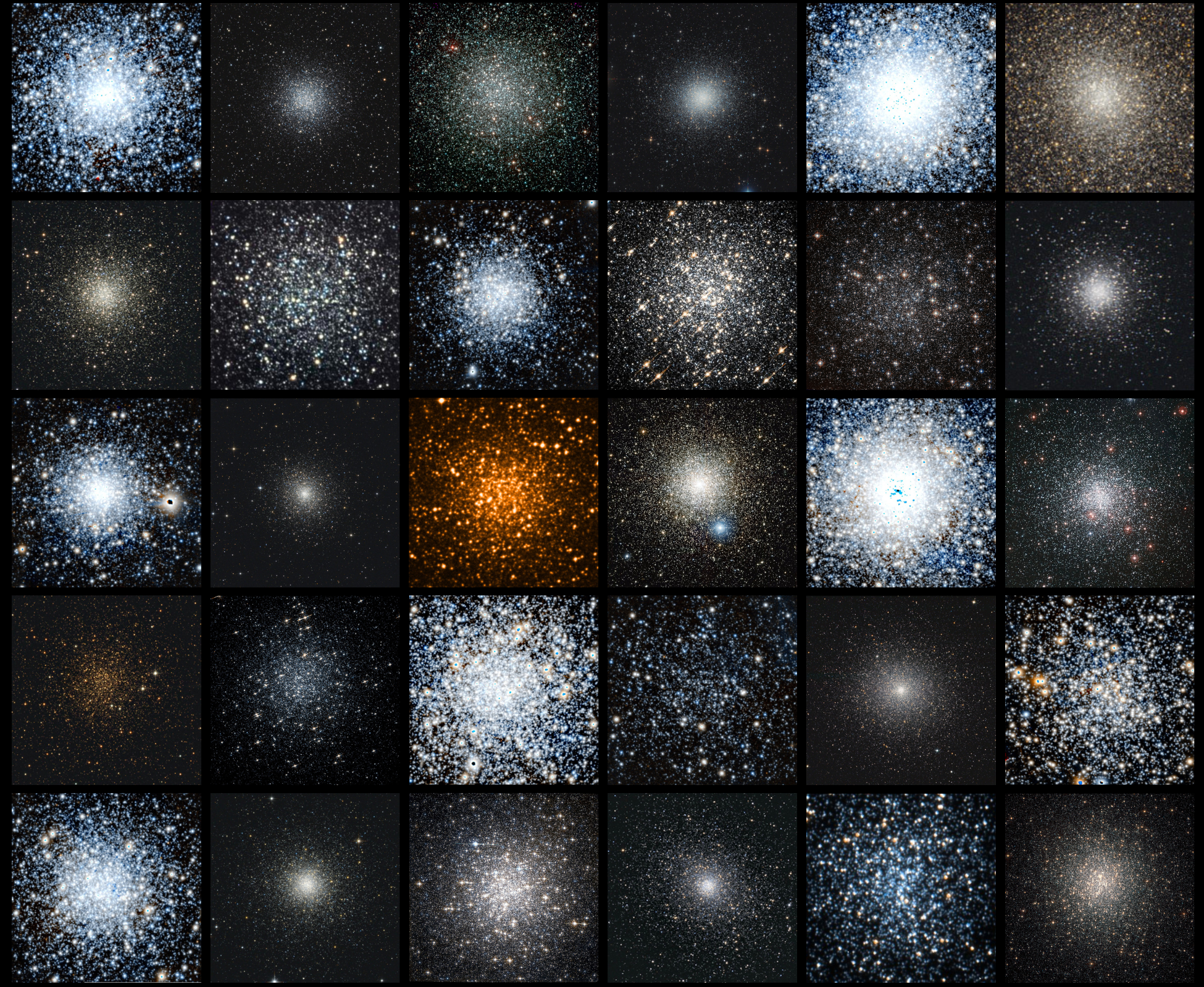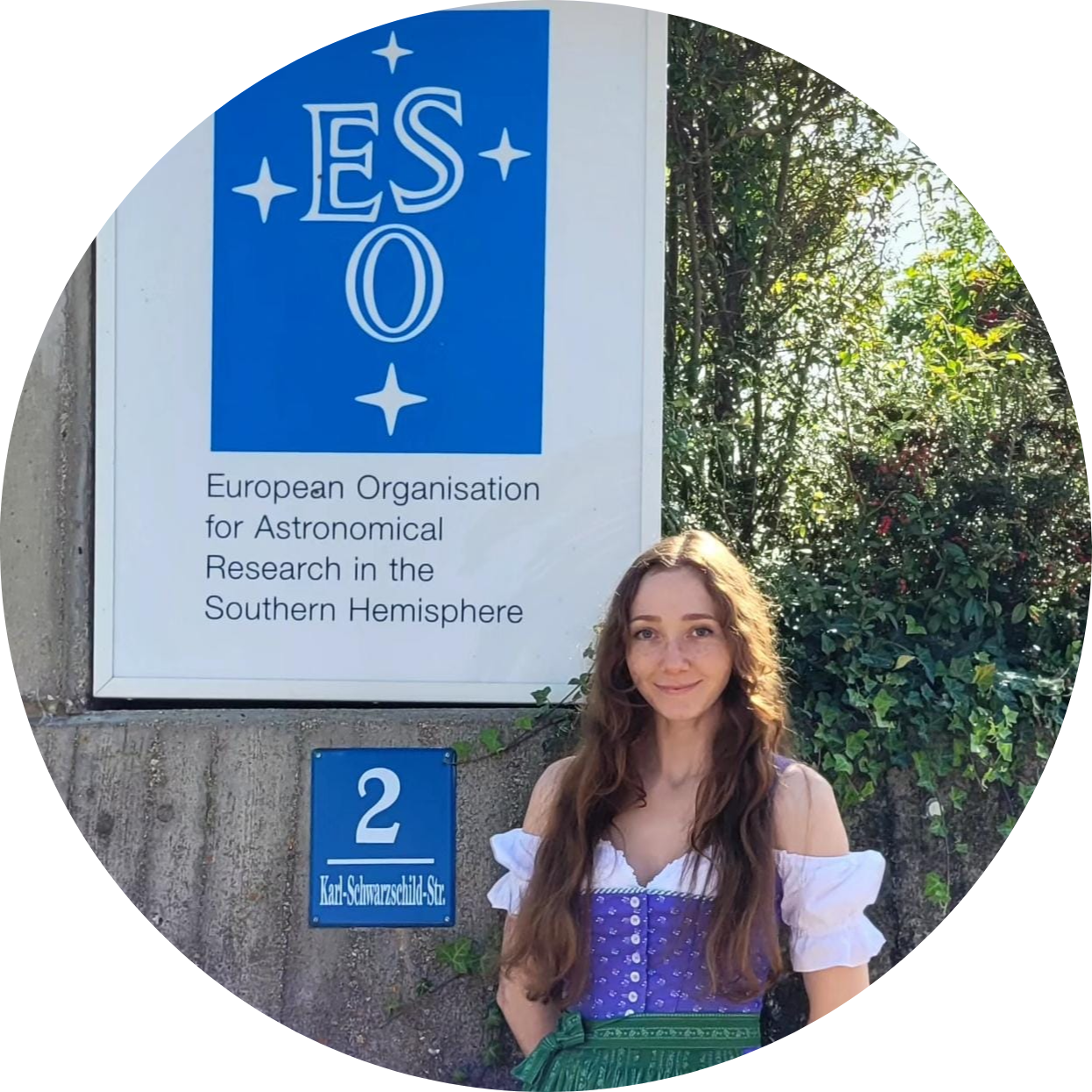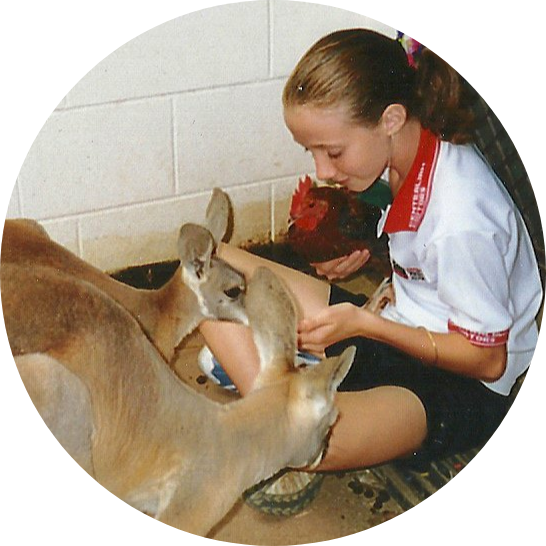Dr. Ellen Leitinger
(Ellie)
Research fellow in Astrophysics
INAF Arcetri Astrophysical Observatory & DIFA Università di Bologna 🇮🇹
ellenivana.leitinger@unibo.it
Research fellow in Astrophysics
INAF Arcetri Astrophysical Observatory & DIFA Università di Bologna 🇮🇹
ellenivana.leitinger@unibo.it
Research in the Asterochronometry and StarDance projects
✧ Galactic archaeology
✧ Asteroseismology
✧ Binary stars
PhD
✧ Globular clusters
✧ Multiple stellar populations
✧ Photometry and spectroscopy
✧ Stellar kinematics
Masters
✧ Reverberation mapping of AGN
During my PhD at the University of Queensland in Australia, I performed an observational analysis of the multiple stellar populations within a large sample of 30 Galactic globular clusters (GCs).
To gain a wide-field view of each cluster, I targeted their central regions using Hubble Space Telescope photometry, while for the outer regions, I used ground-based photometry from the extensive catalogue provided by Stetson et al. (2019). Using this combination of photometry, I classified the stars into multiple populations and determined the spatial distributions of the populations. My aim was to see whether one population was more centrally concentrated than the other. In the end I discovered a wide range of spatial distributions, furthering our understanding of the possible formation scenarios of GCs and their multiple stellar populations. You can read more in Leitinger et al. (2023).
My next PhD project at the European Southern Observatory in Germany was an analysis of the 3D kinematics of the same 30 globular clusters in my sample.
By combining proper motions with line-of-sight velocities, I determined the 3D kinematics of each cluster and their multiple populations. More specifically, I calculated the rotation angles, inclination angles and total rotational amplitudes, as well as the velocity dispersions and anisotropy profiles.
I found a lack of significant rotational differences between the multiple populations, regardless of the spatial distributions of the populations. I also discovered that clusters with a primordial central concentration show anisotropy in their outer regions, while clusters with enriched central concentrations show either tangential anisotropy or isotropy. This has been particularly interesting for collaborators attempting to reproduce my observational results with simulations, working towards the biggest question in the globular cluster community: "how did they form?". You can read more in Leitinger et al. (2025).

Throughout my degree at the University of Queensland in Australia, I participated in outreach events as a science demonstrator for Demo Troupe, in which I was part of a team performing live shows about the physics of exciting phenomena such as Tesla Coils and Superconductors. I also assisted in organising and supervising students for the Junior Physics Odyssey at the University of Queensland - a program which encourages High School students to pursue an interest in physics by demonstrating popular physics experiments and providing support and feedback on their problem solving skills. The same format was also implemented in the Astrophysics work experience program at the university, in which I supervised 8 High School students.
During my undergraduate degree I spent 5 years as a teaching assistant employed by the University of Queensland to lead tutorials, workshops and laboratory experiments in the topics of Electromagnetism and Modern Physics, Theory and Practice in Science, the Physical Basis of Biological Systems and Numerical Methods in Computational Science. During tutorials and workshops, I gave short lectures and assisted undergraduate students in problem solving. As a laboratory tutor, I carried out these same duties, as well as demonstrating and supervising a range of physics experiments. I was also employed by the university as a grading assistant for each course, providing grades and feedback on assignments and laboratory reports.
Additionally, I spent 2 years employed by the university as a Physics Laboratory Assistant, which also required me to assemble a wide range of experiments for first, second and third year physics courses, with each course requiring 3-5 different experiments per semester. During my honours degree I was also elected Communications Officer of the University of Queensland's Physics Club: PAIN, focusing on the organisation and advertising of weekly physics-related campus events and the annual stargazing retreat: Astrocamp.


I was born in outback Australia, in a small town called Alice Springs. Due to the low levels of light pollution in central Australia, the night sky was bright and full of stars. There wasn't much to do in this small desert town, so during my childhood and teenage years I took every opportunity to lay in the sand at night and stare at the stars. It's been my dream for a very long time to make a career out of looking up at the night sky ~✧
Astrophysics isn't all I do though! In my free time I love to go on adventures with friends and my 3 legged cat, Rae. I also love playing tennis, hiking and indoor climbing, as well as painting, baking desserts and adventuring in a Pathfinder campaign alongside my astrophysics friends!
